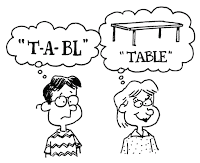What Makes UDL Lesson Plan Different?
Universal Design for Learning (UDL) is different in that it is a flexible approach to learning that provides each learner with total and equal opportunities to learn. This lesson is customized so that each learner will learn the way that suits them best. According to the National Center on the Universal Design for Learning, "
UDL seeks to minimize barriers and maximize flexibility". The Universal Design for Learning provides flexibility in the way information is presented and how students responds to the knowledge and how they are engaged. The Universal Design for Learning also reduces barriers to the instruction and also provides accommodation, support, and high expectations for students, even those with disabilities and language barriers.
UDL is based on three principles:
1. Multiple means of representation which means that the teacher provides the learner with different options to learn the information that is being presented for example using video, slideshows, lectures, graphic images
- no single method is always best, as opposed to "chalk and talk".
2. Multiple Means of Expression which gives learners an alternative for demonstrating that which they know. Students will be required engage in numerous activities in expressing what they learn for example composing and editing essays on the computer instead of composing it on paper; they are also allowed to used text to speech to express themselves if they have speech defects. Using the UDL framework, every student is allowed to express themselves despite their ability.
3. Multiple Means of Engagement is when you tap into the learners interest, challenge and motivate them appropriately. Students' diversity should be taken into consideration when engaging students.For example, when teaching a math lesson about place value, instead of teacher presenting the lesson in a lecture form, the teacher could use a smart -board and allow students to demonstrate and interact using the smart-board instead of just drawing objects on a white board.
The UDL lesson caters to the different learning styles, enables students to understand which means of presentation, expression, and engagement are best for the learner.
How to Determine a Lesson Assessment

Just as the Universal design for learning lessons are designed to be flexible and accessible to all students, so should the assessment method be. The main goal of the assessment should be the students - what are the abilities, are their language barriers, visual disability ect. In a UDL all students work towards the same goal but they use different methods to achieve them so is the assessment, where students are assessed to see how much they have learned but by using different assessment tools. For example, in a 2nd grade class, students are learning about measuring tool, the goal is for students to be able to identify at least 3 measuring tools and their functions. Some students will be required to draw and label at least 3 measuring tools, some will be required to highlight them on their iPad by just a touch of a button, others may be required to make a model using clay; this is dependent on the students varying abilities.
Resources for UDL Lesson Planning
National Center on Universal Design and Learning
http://www.udlcenter.org/
The Iris Center on UDL Lessons
http://iris.peabody.vanderbilt.edu/module/udl/cresource/q2/p08/udl_08_link_lpudl/
Mutliple Means of Representation - Amazing Space
http://amazing-space.stsci.edu
Cast UDL Curriculum Self Check
http://udlselfcheck.cast.org/resources.php
How to Plan UDL Lesson
http://blog.brookespublishing.com/6-steps-to-planning-udl-lessons-3-teacher-stories/
 An IFSP is the abbreviation for Individual Family Service Plan. IFSP is a plan that is designed for special services for young children, birth to three years old, who are developmentally delayed. Once the child reaches 3 years the IFSP is replaced by an Individual Education Program (IEP).
An IFSP is the abbreviation for Individual Family Service Plan. IFSP is a plan that is designed for special services for young children, birth to three years old, who are developmentally delayed. Once the child reaches 3 years the IFSP is replaced by an Individual Education Program (IEP).





























